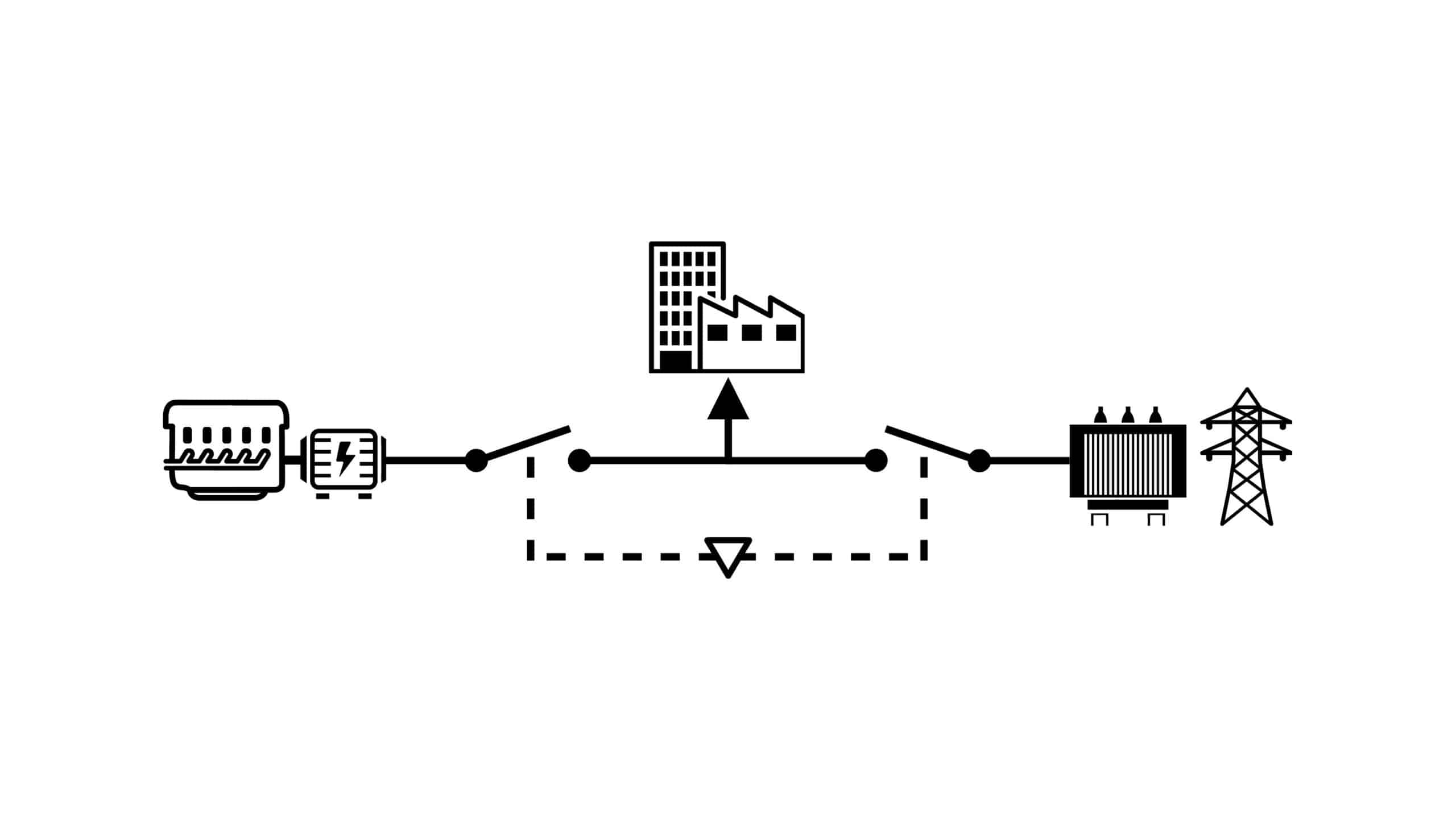What is Auto Mains Failure (AMF) ? Everything you need to know

Understanding Auto Mains Failure systems
What is Auto Mains Failure ?
Auto Mains Failure is a crucial component in modern power systems, designed to automatically switch from the mains power supply to a standby generator in the event of a mains failure. When the AMF controller detects a power outage from the main supply, it initiates the backup generator to restore power quickly to the connected load. This process minimizes downtime and helps protect critical electrical equipment, although it does involve a brief interruption. It is important to note that while AMF systems are highly effective in restoring power, they do not provide an uninterruptible power supply unless combined with an uninterruptible power Supply (UPS) system. Without such integration, brief power interruptions occur during the switch, which could impact sensitive applications like medical equipment or data centers.
Key Features of AMF Systems
Auto mains failure systems are designed to provide reliable and automated power management by starting a generator when the mains supply experiences failures, such as voltage drops or frequency deviations. The control module within an AMF system is specifically tailored to manage the entire generator operation. This includes:
Generator Startup and Load Transfer: The AMF system handles the entire process from the initial startup of the generator to the seamless transfer of power to the load. It ensures that the generator is brought online smoothly and that the power is reliably transferred to maintain operations.
Protection Management: AMF systems are equipped to manage both generator and mains protection. This includes monitoring electrical parameters such as current and voltage to ensure that the system operates safely under varying conditions, but also engine paramaters such as oil pressure and water temperature. They detect and respond to faults, reducing the risk of damage to the equipment.
Communication with the Engine Control Unit (ECU): AMF systems are connected with the engine’s Electronic Control Unit (ECU) to monitor critical engine parameters. This communication ensures that the engine operates within safe limits and that any issues are promptly addressed.
User Interface and Monitoring: AMF systems provide essential information to users through a user-friendly interface. This includes displaying real-time data on parameters like frequency, voltage, and current, which allows for effective monitoring and control of the system.
AMF panels are typically housed in robust enclosures, offering protection against external elements and ensuring their durability in a wide variety of installation environments. These panels are often mounted in accessible locations to facilitate easy monitoring and maintenance. AMF systems are widely used in applications requiring reliable power continuity, such as hospitals, data centers, and industrial facilities. However, it’s important to remember that without a UPS integration, there will be a short power disruption during the switch from mains to generator.
Pros and Cons of Implementing an AMF System
Advantages : Simplicity and Efficiency
AMF systems offer several significant advantages, particularly in terms of simplicity and cost-effectiveness. Designed to ensure continuous and automatic power supply, these systems are easy to install and manage. They automatically monitor the electrical supply and switch to a backup generator in the event of a power outage. With an intuitive and cost-effective control panel, AMF systems provide an efficient and affordable solution to protect and ensure the uninterrupted operation of your electrical equipment. Furthermore, their design minimises the risk of data loss when used with a UPS and guarantees optimum performance in emergency conditions. These systems are also equipped with alarms to alert users to any anomalies or failures, providing additional security.
Drawbacks : Key Limitations and Considerations
Auto Mains Failure systems, while essential for ensuring power continuity, have some significant limitations. One key drawback is that they inherently involve a brief interruption when switching from mains to generator power, unless coupled with a UPS or other means of maintaining continuous power. This can be particularly challenging in applications requiring uninterrupted power, such as sensitive medical or data-driven environments. Additionally, AMF controllers are typically limited to managing a single generator and a single utility power connection. In systems with multiple generators or multiple utility power sources, AMF systems may not be suitable, as they cannot effectively manage such complex configurations. For larger installations, where redundancy and more intricate load management are required, additional equipment or more advanced systems may be necessary to ensure continuous operation.